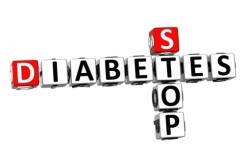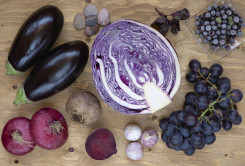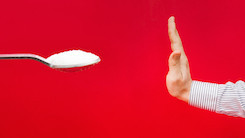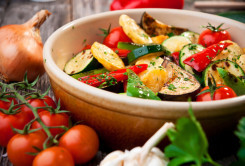Brenda Watson's Blog, page 4
November 20, 2015
Probiotics Shine in the Fight Against Type 1 Diabetes

The University of South Florida here in Tampa is known for its world-class research and treatment of diabetes. Over the last 15 years grant monies have supported the Diabetes Center’s efforts to examine both prevention and environmental causes of this dramatically rising health risk.
An interesting article in The Tampa Tribune just the other day reported exciting findings of a new study spearheaded by USF researcher Ulla Uusitalo. The results stated that infants with a high genetic risk of developing Type 1 diabetes who were given probiotic-rich formula or supplements in their first 27 days of life were 60% less likely to develop islet autoimmunity, a precursor to the disease. Wow!
Uusitalo, an associate professor of pediatrics at USF, worked with an international team of coauthors and researchers studying the diets and blood samples of 7,473 high-risk children, ages 4 to 10. The study was conducted between 2004 and 2010 and the children studied lived in such diverse places as Colorado, Georgia, Florida, Washington as well as Germany, Finland and Sweden. The study is known as “The Environmental Determinants of Diabetes in the Young” and the future intention is to follow the children until they’re 15 years of age.
Although Uusitalo is very clear that the study doesn’t prove that probiotics can prevent the disease, it is nonetheless heartening that research is now looking at what might help prevent a disease from manifesting, as opposed to focusing on what might cause the disease symptoms to develop. What an important distinction!
The article, published this month in the medical journal JAMA Pediatrics, is one of the first of its kind, and I’m so happy to see that the star of the show is probiotics! Those good bacteria deserve lots of applause!
As Thanksgiving week approaches, I’m very grateful to reflect on the positive direction that awareness of our microbiome (that garden in our gut) seems to be moving. I’m also thankful each time I see another article that educates on the harmful effects of sugars and processed foods and offers healthy alternatives.
I can’t think of anything that has a more profound effect on overall health than feelings of gratitude. So at this happy time, I wish you many grateful moments, and lots of probiotics too.
November 13, 2015
Food as Medicine to Balance Your Blood Sugar

I’m so happy to see that people are becoming so much more aware of the sugar in their diets, and the impact it has on their health. The term “blood sugar” is now common in conversation and most of us are happy to learn of ways to control the fluctuations that may result in metabolic syndrome, diabetes, or other inflammatory conditions like cardiovascular issues.
Obviously eliminating the processed high carb, high sugar offerings is key. Exercise is also an integral piece. I’m not talking about Olympic endurance training. Simple movement like walking on a regular basis will be extremely supportive of your entire well being.
And personally I really enjoy the concept of food as my medicine. Here are some foods that research has found to have blood stabilizing effects on your day.
Anthocyanins are naturally occurring plant pigments found in red, purple and blue fruits and vegetables. In addition to balancing blood sugar and decreasing inflammation, they also have exhibited protective actions for the cells of the pancreas. So next time you enjoy berries, eggplant, black currants, red cabbage or dark beans you’re doing your blood sugar a big favor.
Apple cider vinegar slows down actions of your stomach and increases efficient utilization of glucose. It also has a positive effect on enzyme activity. If you are concerned about the possibility of type 2 diabetes, consuming apple cider vinegar at bedtime may help lower your next morning fasting glucose level.
Fiber, a personal favorite of mine, is a true friend to blood sugar balance. In short, fiber absorbs and dilutes the digestion process of carbohydrates and has demonstrated a decrease in post-meal blood sugar readings by an average of 20 percent. Populations in other countries that consume large amounts of fiber are virtually free of bowel diseases.
Both types of fiber, soluble and insoluble, are found to be helpful, so please be generous with those leafy greens, legumes, low-glycemic fruits, chia, hemp, ground flaxseed and psyllium and even some quality whole grains. Your blood sugar, and your overall digestion will appreciate it.
Chromium is a micromineral that is critical for sugar metabolism, and is widely available in supplement form. However it’s nice to know that you can find chromium in broccoli, organic eggs, barley, oats, green beans, onions, and nuts, so chromium can be delicious too.
This last suggestion may not be supported as conclusively by research as by traditions, and I’ll offer, enjoyment. Although there have been studies linking cinnamon with lower fasting blood glucose, it seems the effects are not long-lasting. Adding cinnamon to your steel cut oatmeal may directly help to balance your blood sugar for that meal, but you better keep the cinnamon shaker around for lunch and dinner as well.
In my experience, when cinnamon is added, many times it seems to satisfy my craving for something sweet. Have you noticed that too? So in a round-about way, that’s sugar control.
I hope these simple “food as medicine” suggestions will serve helpful on your own path to balanced blood sugar and excellent digestive health.
November 6, 2015
Demon Sugar Strikes Again!

This week it seemed there was an explosion of information shining the spotlight on the toxic effects of sugar. Not a new battle cry from me, of course. Still, to see such supportive scientific study done, especially with regard to protecting our younger generation, is heartening.
One unique study reported in Time magazine was particularly interesting. Please take a few moments to read Time’s article here.
The study was conducted by Dr. Robert Lustig, from the Department of Pediatrics at the University of California, San Francisco. Dr. Lustig is no stranger to educating people about the dangers of sugar through both books and research. He and his colleagues wanted to determine if sugar was more than just an incidental finding of metabolic syndrome. He was looking for causation, and he may have found it. He believes his study has produced the “hard and fast data that sugar is toxic irrespective of its calories and irrespective of weight.” Those are some fighting words!
The design was innovative in that it simply shifted foods containing added sugar to other types of foods, many times other carbohydrates. Children between the ages of 8 and 18 were the subjects of the 9 day trial, and there was no attempt at all to put the subjects on a “healthy” diet or to decrease the number of calories of foods consumed. In fact, the caloric content was held stable. The only difference in the eating plan was that the children were not getting their calories from foods with added sugar. Their total dietary sugar intake was reduced to 10% of their calories.
For example, sweetened yogurt was replaced with baked potato chips, pastries were swapped with bagels and turkey hot dogs were subbed for chicken teriyaki (nixxing that sweet sauce) . Not what I would consider health food (and neither did Dr. Lustig suggest that it was).
Amazing things still happened to the physiology of those young bodies. Fasting blood sugar levels dropped dramatically along with insulin production. No surprise since insulin is needed to metabolize carbohydrates and sugars. Triglyceride and LDL levels also improved and I smiled the widest when I read that they showed less fat in their livers. After only 9 days!
Fatty liver disease, for many years seen most prevalently with alcohol abuse, has been a disturbing and debilitating finding in recent years in overweight people diagnosed with sugar handling issues. Lower liver fat is really something to jump and dance about in my book! Happy liver, happy life! And to think that these great results came about from research only looking at “added sugar”. As you know, in my Sugar Equation, and in Skinny Gut Diet, I also take into account the very real sugars represented by carbs too.
So when I read another article about how the food industry is threatening to withdraw financial support from the World Health Organization, my spirits fell a bit. The WHO’s new guideline on healthy eating is slated to suggest that sugar should account for no more than 10% of a healthy diet. The food industry is pressuring the WHO to restate that recommendation at 25%. Gosh, in that 9 day clinical trial I just shared with you, the 10% number produced wonders!
All I can say is – I think I’m hearing the other side of the coin rearing up against the WHO – profit! Sugar is money, and the huge food industry leaders have a whole lot of clout these days in establishing policy, don’t they?
It was amazing to me that the WHO actually received a letter from ambassadors “insisting the report should be removed on the grounds that it would do irreparable damage to countries in the developing world”. What? The nerve of a statement like that when sadly in developing countries around the world where the soft drink industry is strong, it’s now common to see malnutrition coexisting with the obesity that’s so common in more affluent countries.
So, let’s get back to the good news. Finally the scientific evidence showing “what’s wrong with this picture” is pointing toward the appropriate perpetrator. Sugar is simply poison, or perhaps to use a more societally acceptable word – sugar is a toxin. Please teach your children well, for a brighter future for all!
October 30, 2015
The Coffee Table’s Turned

Coffee in America. To many of us a very desirable liquid that invokes strong emotions of enjoyment, representing a sense of well-being and providing focus. Coffee seems to sharpen us up, help us to get things done. In these stressful times, coffee can offer an important enhancement to the day, or the night.
With my habits I like to find reasons why my chosen patterns might offer me some health benefit in addition to an emotional lift. At the very least I’d like to think that my daily choice isn’t overly harmful.
I recently had to smile as I browsed this information about coffee. I happen to enjoy a morning cup as much as the next person, after all. So when I read that Eric Rimm, a professor of epidemiology and nutrition at Harvard’s T.H. Chan School of Public Health feels coffee is an excellent beverage choice, I wanted to share his positive findings with my fellow coffee lovers.
To sum up the interesting article, Prof. Rimm differs with the generally held opinion that water is the best beverage to consume under all circumstances. He feels other beverages, and in fact food, provide much of the hydration our bodies need. He states there really isn’t a set amount of water that a person requires daily (those 8 glasses are not true for all!). He asserts that the amount of hydration needed is relative to the individual, their energy output, their environment, and their liquid intake. He goes on to say that coffee is definitely healthier than sugary soda (boy, I’m with him there!) and that coffee’s ability to enhance memory for up to 24 hours after consumption is a huge plus.
Prof. Rimm states throughout the article that unsweetened beverages are the way to go (I wonder if he’s seen my Sugar Equation), and he says that since coffee really is almost completely water, a person is actually hydrating when enjoying their cup of Joe.
He also sites a study that shows that water isn’t as strong a diuretic as we have been told, and even heavy coffee drinkers build up tolerance to any diuretic effects. Coffee is also high in natural polyphenols, those micronutrients that research is showing more and more to have a positive impact on chronic degenerative illnesses like cancer, high blood pressure, and cardiovascular disease.
Prof. Rimm even mentioned that people who drink two to three cups of coffee daily show lower rates of diabetes than those who don’t drink any coffee. What an interesting observation.
So if you happen to enjoy your morning Java, you too can smile as you remember the benefits it may offer to you. Just one catch here – if your favorite coffee drink is a mocha with whipped cream – literally overflowing with sugar and perhaps even topped with chocolate shavings, the healthful benefits of the coffee itself may well be lost in the poisonous effects of the added sugar (sorry, I just had to add that!) One tip – erythritol, perhaps monk fruit sweetener, maybe even stevia – all may be great to sweeten your coffee so it’s “just right”~
October 23, 2015
Bacteria and the Elderly – Better Days Ahead

Recently I was pleased to come across an article in the Wall Street Journal that discussed the very positive shift away from overuse of antibiotics in nursing homes.
Being the defender of the microbiome that I am, when I read that up to 70% of nursing home residents receive one or more courses of antibiotics every year and up to 75% of those prescriptions are given incorrectly – well that information had the hair all over my body on end! It was reported that the prescriptions were written for the wrong drug, dose, or duration – and this information is from the Centers for Disease Control and Prevention. Oh my!
Apparently, one of the biggest antibiotic misdiagnoses is for treatment of suspected urinary tract infections. Believe it or not, antibiotics to treat supposed UTIs are being given to the elderly for vague symptoms like confusion, the discovery of bacteria in just one urine sample, or even in the case of a random misstep resulting in a fall.
Sadly, since women are much more likely to develop UTIs then men, many of us ladies have experienced the misery of a UTI. Although it’s possible to have a UTI and not experience obvious symptoms, that is much more the exception than the rule. In the companion book to the public television special The Road to Perfect Health, I list symptoms for UTIs. A few are a persistent urge to urinate, painful or burning urination, frequent urination, and the list continues with other very clear indicators. Finding bacteria in the urine is just one piece of a diagnosis. “Confusion” wasn’t even on my list. So does this mean that confusion is only a symptom of UTIs in elderly people? How can this be?
Dr. Christopher Crnich, an infectious disease specialist and researcher at the University of Wisconsin School of Medicine and Public Health states that generally 50% of women and 25% of men in nursing homes have bacteria in their urine. He then emphasized that didn’t automatically indicate a UTI. Bacteria can develop for many other reasons – immune system and hormonal issues for example. I’ll include an imbalanced gut here, resulting from a diet containing too many sugars. By the way, this is true for people of all ages.
This article really got me thinking as I approached the end. According to Dr. Diane Kane, chief medical officer for St. Ann’s Community, a not-for-profit health-care system in Rochester, NY, who is a passionate critic of UTI over-diagnosis, “When you have dementia, you’re going to have good days and you’re going to have bad days. When you have dementia and you have a bad day, please don’t send a urine, because it’s going to be positive.”
As I interpret Dr. Kane’s statement, “bad days” of dementia (more confusion) will physically manifest as an increase of pathogenic bacteria in a person’s urinary system. Following that line of thought, a decrease in the overgrowth of bad bacteria in the body could potentially alleviate some symptoms of dementia or confusion. That could certainly explain why a patient’s confused mental state may seem to improve while on a round of antibiotics.
Unfortunately, if no effort is made to repopulate the gut with good bacteria after antibiotics, research has shown that bad bacteria and yeast readily re-establish. Upon the return of a confused mental state, further urine testing would reveal more bacteria, perpetuating another misdiagnosis of UTI and laying the groundwork for additional antibiotic treatment. Round and round we go.
In my mind, a much better and more logical step toward improved daily function and cognition for the elderly in nursing homes might be to dramatically increase the amount of good bacteria provided to the gut on a daily basis. The good bacteria will displace the bad, supporting and maintaining the integrity of all the organs of elimination, bladder included. And perhaps positively impact confusion and dementia. I’d love to see more research studies created that look at these parameters. Are you with me?
I’ve blogged often on how declining gut health, toxicity and dementia seem to go hand in hand. I’ve also shared research highlighting how probiotics can be effective treatment for that dreaded C. difficile infection that occurs most often in hospitals and long term care facilities, haunting the weak and elderly.
Let’s all envision a day when antibiotics are the last resort should a person be confused, perhaps has fallen, or mild amounts of bacteria are found in their urine. Instead let’s picture a standard of care designed to increase the good bacteria in the body through daily probiotics, kefir, fermented veggies and/or kombucha. Now that’s HEALTH care!
October 16, 2015
If Not Milk, Maybe Kefir?

You may have seen my newsletter this week where I discuss the low-fat misinformation that set so many of us on the SAD way of eating! (Standard American Diet). Contrary to the assertions of the Dietary Guidelines created in the 80’s, current research points out that full fat dairy can for many people actually be a very healthful food.
Yet for some, milk may cause allergic reactions due to the lactose (milk sugar) it contains. That group of people may have found in the past that they can tolerate dairy products when they take specific enzymes called lactase.
Another, even better way to reduce the lactose in dairy is to ferment milk, which then produces kefir. Through this process, most of the milk sugars are reduced making the milk more digestible (for everyone) and also giving kefir it’s somewhat sour taste.
The best news is that kefir can provide you an inexpensive and easy way to dramatically increase your daily dose of probiotics – those good bacteria we all know and love!
Do you like yogurt? If so, you’ll most likely enjoy kefir. I’ve been talking about the probiotic benefits of some types of yogurt for many years now. Where yogurt provides only a few different types (strains) of good bacteria, kefir has been found to offer between 30 and 50 different ones! The more strains the better it seems, whether we’re looking at estrogen balance, as protection against childhood allergies, or even regarding weight loss.
Making kefir actually predates refrigeration as a way to preserve milk longer. We now realize all the great probiotic benefits we gain from the process – benefits like healthy bowel movements, a strong immune system and more restful sleep, just to name a few.
You can find kefir at your local grocery or health food store in the refrigerated section next to milk. Be sure and choose the unsweetened variety. The process is so easy though, I would recommend making your own. Donna Schwenk, author of Cultured Food for Life, offers great how-to instructions on making kefir and other fermented goodies.
I know you’ll love the many wonderful ways to use this healthy food. I add kefir to my smoothie, I use it as a topping for berries, often as an ingredient in salad dressing, and it makes a wonderful probiotic coleslaw too!
This season invite some fermented foods into your life. You might begin with guilt-free dairy by choosing full fat organic milk (or even goat’s milk) and culture some kefir. It’s always a great day to support the good bacteria in your gut!
October 2, 2015
Heart Advice for Difficult Times

Since the age of 17 I have studied a large number of the spiritual philosophies from around the world. Ultimately, the unifying piece of all for me has been meditation, or commonly these days, it seems to be termed ‘mindfulness’. I have blogged many times about the healthful effects of mindfulness – a state of active, open attention to the present moment. The myriad chronic conditions that benefit from decreasing stress and allowing the moment to just “be” are notable – diabetes, cardiovascular disease, chronic inflammation, depression – and the list continues.
So what is it in our lives that keeps us from taking that small amount of time for ourselves to relax into our breath and go within? Many times the simple practices of mindfulness get lost, and often in the best of times, leaving us feeling empty when we thought we might be overflowing with happiness. The regular practice of going within offers far-reaching joyful benefits – and there’s a reason it’s called a practice.
I’ve noticed that through the years, my own personal “rules” for how things must be to contact that peace within have shifted spaces and formats.
These days there are free resources all over the internet to help us let go of anxiety and find peace within our seemingly chaotic days.
Recently I suffered an intense loss in my life and like many others in times of grief, my meditation practice has grown even more dear to me. What has shifted strongly through my own letting-go process is not only do I have a certain place where go to practice, I have recently placed objects there that have deep significance to me.
I am a vibrational person, as I believe we all are, and I use my toning bowl to create sounds I love. I may play some music. I may read for a while, perhaps light a candle, sometimes chant. There may be alligator tears, or giggles that surprise me. I’ve seen my willingness increase dramatically to confront the inevitable painful mental blocks and searing emotions that arise around those times of loss in our lives. I’m allowing the love and light that is present in all to heal me. And no matter when I arrive, I always walk away closer to the heart of beloved peace.
In the past, even 5 minutes would do. However now as I recognize my own need for healing, I’ve made a serious commitment to my daily practice. Without fail I spend a minimum of 20 minutes which may turn to an hour. Some days I have to get up at 5 a.m. to keep this commitment. And believe me, it’s worth it.
For you, it may be a place in the woods, a tiny spot in a garden, or even a chair in a library where you find yourself willing to breathe and be still. Others are able to meditate through physical movement like tai-chi. I’ve watched artists in meditation as they create their own form of beauty. It’s all good.
For now, I’d like to offer you 7 points that may be helpful if you’re considering a regular mindfulness practice.
Whether you’re sitting on the floor, a chair, or wherever – be comfortable.
I believe it’s most effective for you to make a sacred place where you return each day, at least in the beginning. There is something soothing about repetition.
Be sure your legs are at ease. If you’re sitting in a chair, have your feet flat and spaced a few inches apart.
From your head to your seat, it’s best to have your spine upright, not slouching.
Allow your hands to be open with your palms resting on your thighs.
My suggestion is to keep your eyes open and relaxed, gazing downward and directed 4-6 feet in front of you. This is not nap-time.
Leave your mouth slightly open so your jaw is relaxed. That way air can move easily through your mouth and nose.
Remember, breath is your spirit. If you find your mind wandering and you’re thinking about situations, emotions or sensations, you can let them go by saying (even out loud) “I’m thinking” – and then focus your attention on an out-breath. Repeat as necessary. There is no wrong way. You are loved.
Ultimately it comes down to the question of how willing are we to commit our time, to loosen our grip on daily life, and be honest with ourselves.
My request for you today is that you take some breaths and moments just for you – and yes, do that each day. It will be my pleasure to meet you across time and space in the present moment of peace.
Happy mindful meditation to you.
September 25, 2015
Vital Planet Pets visits Expo East

Last weekend was a wonderful experience for me and I wanted to share it with all of you!
A number of us from Vital Planet Pets attended Expo East in Baltimore. This is a yearly gathering where health and wellness companies of all types come together to showcase their products and hopefully, gain interest from health food store buyers nationwide.
As I’ve mentioned before, Vital Planet Pets is my brand new company, just started this year. Our goal is to provide the highest quality pet supplements available – yes, on the planet!
You know how passionate I am about probiotics and also herbal and nutritional supplements to help manage our toxic daily lives. Well, our pets are even more at risk than we are! Think about it – they’re much closer to the ground and floor where they are exposed to pesticides and whatever we bring into the house on our shoes. They lay on carpets, play in dirt, chew on unmentionable things – oh my! As a matter of course and safety they are vaccinated, de-fleaed, and receive antibiotics when necessary. Believe me I know. I share my life with three doggies on a daily basis and love them more than I can say. I want them around for a long time so I know I need to support their immune systems and vitality daily. I sincerely wanted to communicate this message at the show.
Our booth was placed with the other creative fledgling companies upstairs. It was all so exhilarating! We were unveiling products that we were presenting to the buyers in a totally new way, hoping that there would be interest in the pet supplements that are our passion. And we were not disappointed!
People visited our booth constantly, and retailers were expressing their excitement to carry our new condition specific therapeutic supplements for their own pets, and the pets of their customers – that’s you! So you can look forward to seeing more Vital Planet smiling dog and cat faces from the shelves of your favorite health food stores. Hooray!
And you just have to hear this – I was blown away! One woman from the show who purchased our product Skin & Coat for her dog emailed us when we returned. She said she had already spent hundreds of dollars trying to help her beloved friend. She was absolutely thrilled to report that after only a few days, she could already see a difference in her German Shorthaired Pointer’s coat. Just imagine how much better her dog feels too! Stories like this make everything worthwhile.
The time has come to help our four-legged friends enjoy the same health that we two-leggeds strive to achieve day to day. Please look for Vital Planet Pet products on your health food store shelves. If you can’t find them, let us know!
We’re here to help you to decrease chronic discomfort in your beloved dogs and cats as you give them the chance to heal from the inside out with Vital Planet Pets!
Thank you for your support.
September 11, 2015
Inspired By ‘Sweet’ Success

Happy Friday to everyone! I’m feeling very inspired today!
You may have heard me speak before about the Skinny Gut Facebook group. It’s a closed group, which in this case means that you simply need to request to be added.
It was started earlier this year by Amber who is extremely sharp, very motivated and has a heart to share great information. It has gently grown to over 1,000 people at this point – all of us exchanging nutritional and life tidbits. I’ve really enjoyed stopping in regularly with answers to specific Skinny Gut questions.
Which leads me to this morning’s inspiration. I never tire of hearing how happy people can actually be, even when they’re not eating bread, potatoes, rice, whole grains or pasta. Imagine that.
One of our members has lost over 15 pounds in six weeks and I laughed out loud when she imagined that her Sicilian grandmother would be turning over in her grave if she heard about her granddaughter’s new eating plan! Then she added that Grandma would be very happy about the zucchini, eggplant, tomatoes and peppers that were being consumed instead. Lovin’ those veggies!
We all desire happiness, and to so many of us, food choices can be wrapped up in the warm emotions of childhood and memories of joy-filled gatherings with friends and family. Sugar and carbs especially. Terms of endearment even register that love affair – “how are you doing Honey”? or “Sweetheart, I hope things are good with you”. It’s entertaining to notice how many conversational references we have to sugar or carbs in our daily interactions. Even something like “couch potato”. Vegetables just don’t seem to get the same kinds of attention. Hmmm.
Another member of the Facebook group mentioned that she’d even like to overcome her reliance on any daily sweets. In addition to the carbs mentioned earlier, she’s choosing to eliminate ‘allowed’ low carb sweeteners and fruits, striving to totally reset her palate. I’ll be very interested to hear about her experience.
Since overcoming the carb habit, I’ve personally discovered that there’s actually a subtle underlying sweetness in many foods I wouldn’t previously have regarded that way at all. And it becomes easy to understand how spices and herbs have been so highly valued throughout history – they offer such wonderful flavor nuances when not overwhelmed by sugar. I’ve even noticed that as my taste buds shift, I feel more satisfied with less quantity of food.
One person posted how comfort foods had always been her downfall, however since making Skinny Gut food choices over the last two weeks, her carb cravings have disappeared – along with over 10 pounds.
So, should you be inspired to experiment with a different eating plan this week, I’d like to share our three easy rules:
Eat more GOOD fats (like avocados, seeds, nuts, olive oil, coconut oil)
Eat living foods every day (lots of low carb veggies, some low carb fruits, fermented veggies and other fermented offerings) and
Eat protein at each meal and snack (that’s every 2-3 hours – remember to have at least an ounce of protein). These tips can be your ticket to knocking out those sneaky carb cravings that might threaten your best lifestyle-shift intentions. And please be generous with the herbs and spices, too.
Inspiration is always an experience I cherish. Thank you to all the beautiful people who take the time to share their successes so I can continue to live inspired – and pay it forward.
August 28, 2015
Back to School Health Tips

Goodbye to summer! I hope yours was enjoyable and relaxing.
Here in Florida, we’re hoping that the heat will lift soon. The kids are headed back to their classes and with the new school year comes the inevitable increase in colds and flu. Lots of excited little human beings in an enclosed space together, laughing, touching and generally sharing their bacteria with anyone in coughing or sneezing range.
How can we parents help to support our children’s immune systems and overall health while minimizing the chances of bringing home the newest variety of bacteria or virus?
Although these simple habits can be taken for granted as obvious, verbal suggestions and leading by example seem to make all the difference. We all remind each other to:
Wash hands after using the bathroom.
Sneeze or cough into our inner elbow, rather than into our hands
Try not to put fingers into noses or mouths – generally avoid touching the face
Avoid the drinking fountain at school – bring bottled water if possible – there are some great eco friendly options available
And my favorite – it’s never too soon to teach our children about the dangers of sugar, and that sugar actually increases their chances of getting sick by feeding bad bacteria that make for unhappy sneezes and coughs. So minimizing sugar, both at school and at home, is one of the healthiest things we can all do together.
Which brings me to something I’d really like to say. Over the last decade, I’ve watched our awareness slowly shift from simply treating symptoms of disease to the sound concept that maintaining our natural health is the most intelligent choice we can make – on a daily basis. Sadly, American marketing techniques are often ahead of our best intentions.
Natural health isn’t always “natural” or “healthy”. We can be tricked by products that might contain a few positive nutrients lost in other ingredients that are downright unhealthy, like sugars. Gummy vitamins are the perfect example.
Sure, our kids love them because they taste like candy. Guess what – they ARE candy! And candy isn’t the way to maintain health – period.
Moms and Dads, please read the labels on those supposed healthy vitamins. If you go to your local health food store and ask, they will show you products that are sweetened with stevia or erythritol or other healthy sweeteners. Spend wisely and really preserve your children’s wellness.
Two other valuable tips:
After breakfast, be sure to give your children a quality multi-vitamin that contains extra vitamin D and,
Before bed, give your kids a probiotic. Their immune systems will love you for it!
Misery and suffering can be optional. Let’s all maintain our health together.



